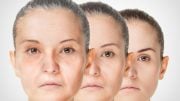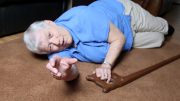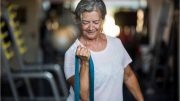
New research published in The Journals of Gerontology suggests that managing cardiovascular disease (CVD) risk factors may help preserve physical function in older adults. Approximately 10% of older adults experience muscle weakness and diminished physical function, leading to adverse health outcomes and disability. The study found that vascular measures were associated with grip strength and change in gait speed, both indicators of physical function.
Study examines relationship of aortic stiffness, vascular function with age-related physical decline.
A recent study published in The Journals of Gerontology reveals that managing cardiovascular disease risk factors may help preserve physical function in older adults. The research, which utilized a longitudinal study design, found that vascular measures were associated with grip strength and change in gait speed, indicating that targeting vascular health may reduce age-related declines in physical function, mobility, and disability.
Managing cardiovascular disease (CVD) risk factors may play a role in preserving physical function during the aging process, according to new research published today by The Journals of Gerontology, Series A: Biological Sciences and Medical Sciences.
“Approximately 10% of older adults have muscle weakness and diminished physical function that leads to adverse health outcomes and physical disability,” said lead author Dr. Shivani Sahni. “Since loss of physical function contributes to reduced mobility, disability, institutionalization, and mortality, management of CVD risk factors can help preserve physical function with age,” said Dr. Sahni.
This study showed that vascular measures are associated with grip strength in cross-sectional analyses and change in gait speed (a measure of physical function) in longitudinal analyses.
This is one of the first community-based studies to comprehensively examine relations of aortic stiffness and vascular function with age-related decline in physical function. Higher aortic stiffness was associated with loss of physical function over ~11 years, said Dr. Sahni, who is an Associate Professor of Medicine at Harvard Medical School and an Associate Scientist at the Hinda and Arthur Marcus Institute for Aging Research at Hebrew SeniorLife. She directs the Nutrition Program at the Marcus Institute.
Blood flow declines with aging, in part due to arterial stiffening. Consequent dysfunction in blood vessel dynamics may contribute to organ pathology and declines in muscle mass, explains Dr. Sahni. Yet, few studies have specifically assessed the role of vascular function, and changes in functional muscle measures such as mobility and muscle strength.
The current study utilized data from a large cohort of relatively healthy men and women and extends previous investigations by utilizing a longitudinal study design.
The majority of previously published studies have utilized cross-sectional study designs with modest sample sizes. The authors believe that future studies should evaluate whether interventions that target vascular health may reduce age-related declines in physical function. This is important because one-third of older adults experience physical limitations contributing to reduced mobility, disability, institutionalization, and mortality. Hence, there is a need for development of novel interventions that target prevention of physical limitations in older adults.
Reference: “Association of Vascular Health Measures and Physical Function: A Prospective Analysis in the Framingham Heart Study” by Shivani Sahni, PhD, Alyssa B Dufour, PhD, Na Wang, PhD, Douglas P Kiel, MD, MPH, Marian T Hannan, DSc, MPH, Paul F Jacques, DSc, Emelia J Benjamin, MD, ScM, Ramachandran S Vasan, MD, Joanne M Murabito, MD, ScM, Anne B Newman, MD, MPH, Roger A Fielding, PhD, Gary F Mitchell, MD and Naomi M Hamburg, MD, 15 May 2023, The Journals of Gerontology, Series A: Biological Sciences and Medical Sciences.
DOI: 10.1093/gerona/glad097
Hinda and Arthur Marcus Institute of Aging Research, Hebrew SeniorLife, Department of Medicine, Beth Israel Deaconess Medical Center, Harvard Medical School, Boston, MA; 2Biostatistics and Epidemiology Data Analytics Center, Boston University School of Public Health, Boston, MA; 3Jean Mayer USDA Human Nutrition Research Center on Aging, Tufts University, Boston, MA; 4Boston Medical Center and Boston University Schools of Medicine and Public Health, Boston, MA; 5Framingham Heart Study, Framingham, MA; 6Graduate School of Public Health, University of Pittsburgh, Pittsburgh, PA; 7Cardiovascular Engineering, Inc., Norwood, MA.
This work was supported by the National Institute on Aging and the National Institute of Arthritis and Musculoskeletal and Skin Diseases (grant numbers R01 AG051728; R01 AR53205; and R01 AR41398); the Heart, Lung and Blood Institute’s Framingham Heart Study (contract number HHSN268201500001I; N01-HC-25195; 75N92019D00031; and 1R01 HL60040); the American Society for Bone and Mineral Research (ASBMR) Grants in Aid Program (GAP) Award.
Dr. Sahni is supported partly by the Boston Claude D. Pepper Center Older American Independence Centers (OAIC; 1P30AG031679) and Peter and Barbara Sidel Fund. Drs. Fielding and Jacques are supported by the U.S. Department of Agriculture (USDA; agreement No. 58-1950-4-00). Dr. Fielding is also supported by the Boston Claude D. Pepper Center Older American Independence Centers (OAIC; 1P30AG031679). Dr. Newman is supported by National Institutes of Health/National Institute on Aging (grant number U01 HL130114); CHS Research Resources for the Cardiovascular Health of Adults; and Pittsburgh Older Americans Independence Center (grant number P30 AG024827). Vascular measures were supported by grant numbers 1R01HL60040 and 1R01HL70100. Dr. Benjamin is supported by R01HL128914; 2R01 HL092577; 1R01 HL141434 01A1; 2U54HL120163; 1R01AG066010; and American Heart Association 18SFRN34110082. Dr. Vasan is supported in part by research grants R01HL142983; R01HL126136; R01HL070279 from the National Heart, Lung and Blood Institute, the Evans Medical Foundation and the Jay and Louis Coffman Endowment from the Department of Medicine, Boston University School of Medicine.








Be the first to comment on "Aging Strong: How Managing Heart Disease Risk Factors Benefits Physical Function"